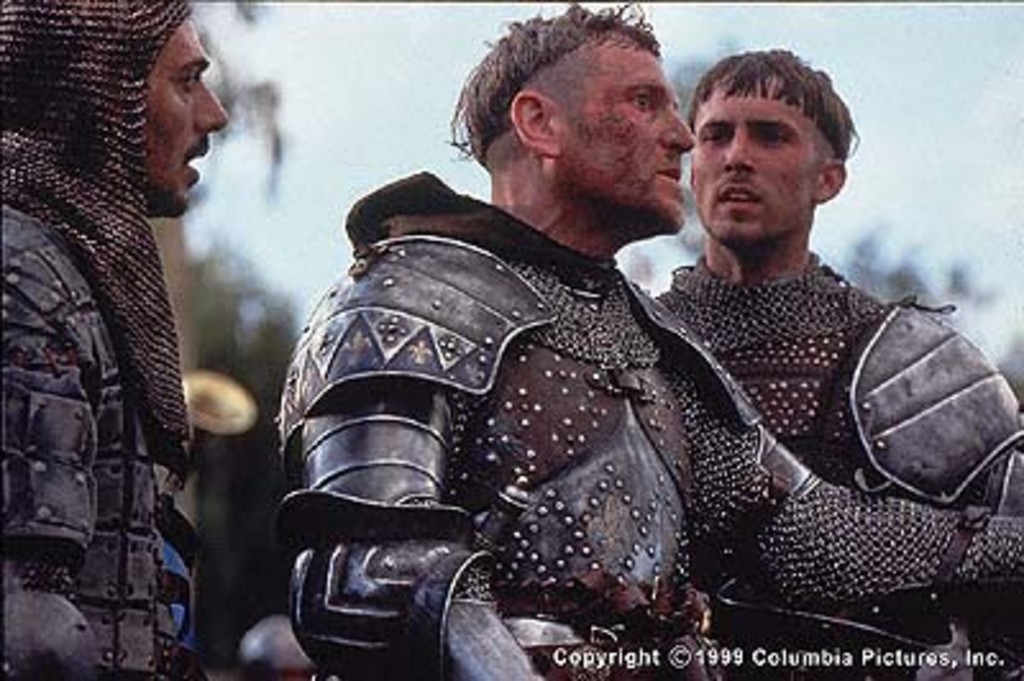
The use of Dustin Hoffman as the voice of Joan’s conscience is a plot device that is downright bizarre.

These seem conducted with a lack of dramatic interest upon Luc Besson’s part.
THE MESSENGER THE STORY OF JOAN OF ARC TRIAL
However, it is during the trial scenes, which have usually been the dramatic highlight of previous versions (notably the Dreyer version), that the film falls apart. The Messenger: The Story of Joan of Arc works the best during the middle where Luc Besson’s Braveheart (1985)-styled widescreen action scope and his personalised portrait of Joan comes to the fore. It is a performance where you can see just what it was about such a character that she inspired a king and an entire army to follow a teenage girl into battle. She and Besson give us an insanely crazed Joan who rallies her troops with a reckless certainty in guiding divine purpose and a charged-up intensity that seems to spill over at the edges with holy fire. For all that The Messenger: The Story of Joan of Arc was slammed for Milla Jovovich (the former Mrs Luc Besson)’s performance, Jovovich does well in the part. The Messenger is the first version of any Joan of Arc story to treat Joan as a psychological study rather than as an objective historic force. Oddly enough, while Luc Besson’s approach may make historical purists balk, it is in these areas rather than the martyrdom and trial aspects, that The Messenger: The Story of Joan of Arc eventually works.
THE MESSENGER THE STORY OF JOAN OF ARC FULL
Where all previous versions of the Joan of Arc story have kept a discreet distance from commenting on whether Joan’s visions were real or not, Luc Besson lacks any such hesitancy and leaps right in there with her in a full flight of Catholic passion filled with speeded-up clouds scudding across the sky with CGI faces emerging and stained glass windows exploding to life. In the opening scenes, for example, the child Joan runs across fields of flowers – but not just one field but multiple fields of flowers that come in a different colour with each successive shot when Joan runs away from her parents, she doesn’t merely flee but conducts an epic flight across vast fields and a bare hill-line that is starkly illuminated by a single tree. Here the historical story gets engulfed by the insistently in-your-face-spectacularity of Luc Besson’s canvas.

Where previous versions of the Joan of Arc story – Carl Dreyer’s The Passion of Joan of Arc (1928), which is widely regarded as one of the all-time great films the stolid Ingrid Bergman version Saint Joan (1948) and the terrible Otto Preminger-Jean Seberg version Saint Joan (1957) – have tended to treat the story as an historical film, concentrating on Joan’s persecution and martyrdom, Luc Besson treats the story of Joan of Arc as a kind of crazed religious action film. The Messenger: The Story of Joan of Arc is case in point. Alas, while both of these transformed Luc Besson into France’s No 1 film-maker and made him a major player in the West, Besson’s next two films, The Fifth Element (1997) and The Messenger: The Story of Joan of Arc, show that big-budget Hollywood-style filmmaking has only succeeded in drowning in leaden, overinflated action bombast all the things that Besson did infinitely better on a medium-range budget.

However, it was with Nikita/La Femme Nikita (1990) and The Professional/Leon (1994), two extraordinarily stylish action films that made striking contrast between the fragilely human and breathtaking action set-pieces, that Luc Besson succeeded in flooring audiences.

French director Luc Besson first drew attention to himself with the visually dazzling Subway (1986) and went on to make the impressive The Big Blue (1988), a mystical film about diving.


 0 kommentar(er)
0 kommentar(er)
